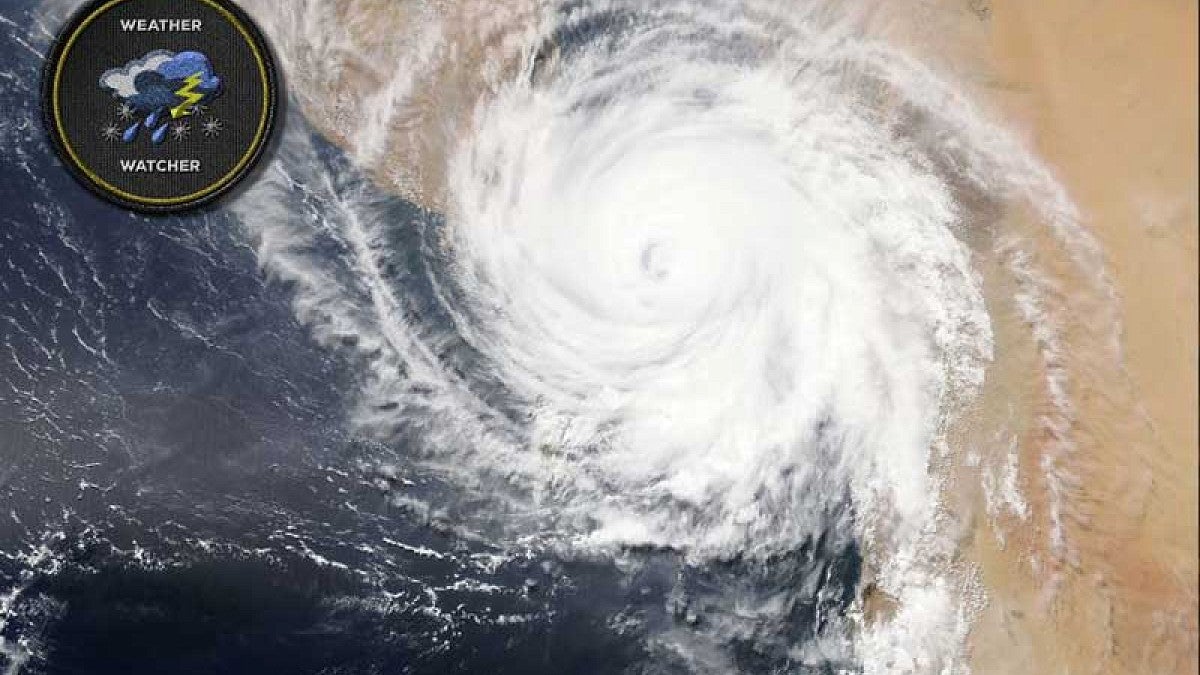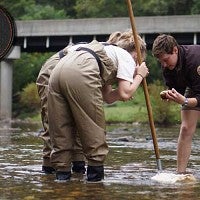Scouting groups like Campfire Girls and Boy Scouts are a tried-and-true way to teach young people new skills and an appreciation for the outdoors.
But climate change is rapidly changing our relationship with the natural world and our ability to thrive within it. What will the Scouts of the future look like?

“Climate change is going to be the problem of our generation,” Benner said, “so anything we can do to tackle it with the skills that we have is worth doing.”
In November, the two women found out that What Design Can Do selected their idea as one of 13 winning projects worldwide out of 384 entries from 70 countries. Their prize? An all-expenses paid, five-month program to develop Change Rangers with the help of experts.
In addition to giving them business plan advice, the program is intended to expand their network of global contacts. In January, Benner and Lewman flew to Amsterdam for a weeklong boot camp with the other contest finalists, a group that includes both students and seasoned professionals.
The finalists represent nine different countries; Benner and Lewman were the only ones from the United States.
“I think we were the only Americans we encountered for the entire week, which was a truly international experience,” Benner said.
The women have been refining their project since then and will return to Amsterdam in May to present on their progress at the annual What Design Can Do conference. They feel it will be a satisfying conclusion to a project that began last summer.
Benner and Lewman, who are roommates, got their idea for The Change Rangers when they were cooped up in their Eugene home to escape the smoky haze brought on by the Eagle Creek fire in the Columbia River Gorge in early September. Although a teenager using fireworks along a hiking trail started the fire, the pair felt the extremely dry conditions that allowed the fire to spread were likely exacerbated by the changing climate.
How to make your idea a reality
Here are 10 takeaways Benner and Lewman learned from What Design Can Do’s business development program:
- It’s not just about what you do, but what comes from it. Look at the pros and cons of every decision.
- Don’t assume. Let your research lead you to conclusions rather than starting with personal assumptions.
- Don’t skip dress rehearsal. You can prototype anything, even if you think an idea is too new to practice. Benner and Lewman plan to ask local Campfire USA troops to test out some of The Change Ranger patches this spring.
- Pivoting isn’t failure. Sometimes a slight shift can make an idea much more impactful.
- Instinct can fall apart at scale. Something you think is common knowledge might not be for others. Always check your assumptions.
- It doesn’t matter if you love the idea; it matters if other people love the idea. Don’t take it personally.
- Partnerships are important. Throughout their journey, the women formed strong bonds with SOJC faculty and new friends abroad. They say that they couldn’t have done it without help from others.
- Don’t play it safe. Benner and Lewman knew that their idea might not sit well with some because it introduced survival skills to children. Rather than going for a safer — and more boring — idea, they focused their message on forging the next generation of “brave, courageous thinkers.”
- Give your idea room to grow. Too many ideas can hinder progress, so come up with one idea and stick with it. Allow it to grow, even if it means handing it off to someone who is more equipped to make progress.
- Design can change the world. Design is about more than just aesthetics. It is a way of thinking creatively to solve a problem.
“These severe events, whether they are wildfires or hurricanes or droughts or rainstorms in the Northeast, are going to become more frequent in our country,” Lewman said. “That definitely inspired us to take action.”
For Benner and Lewman, the Climate Action Challenge win is a highlight in their already impressive resumés. Benner double-majors in advertising and media studies and minors in gender studies. Lewman is an advertising major with minors in sociology and Spanish.
Benner also serves as a strategy director for the National Student Advertising Competition Team Upstream Advertising, and Lewman is a student director for Allen Hall Advertising. Lewman recently wrote much of the copy for the new UO360 campaign, an immersive experience that allows prospective UO students to get a taste of campus life via a 360-video virtual reality app.
“Both of us are very interested in how we can use our strategic communication skills to do things beyond just advertising for brands,” Lewman said. “So immediately when we heard about this competition, we were interested.”
The two women applied the skills they learned in the School of Journalism and Communication to create their winning pitch for the Climate Action Challenge. They didn’t have access to expensive video equipment, but they used the multimedia skills they learned in the Gateway to Media series of courses to create a video detailing their business plan.
“Even though we considered ourselves strategists, this was very much a hybrid moment where we decided to teach ourselves about cutting together audio, writing a script and using iMovie — which is all we had — to make a video,” Lewman said.
They tapped into other experts, talking with a climatologist from Brazil, a designer from London and a What Design Can Do creative director from Amsterdam as they developed their project. They did a lot of learning on the fly.
“It really pushed on the limits of what you learn in school,” Benner said. “That was just the start of what has been the biggest overarching theme for us, which is how we can push learning and knowledge outside of what we do at the university.”
In Amsterdam, the women participated in workshops and classes led by professionals with the other winners. They learned everything from forming business models to product design, and they ended up changing their business model as a result of expert feedback.
Originally, they intended Change Rangers to be a new scouting organization. Instead, Benner and Lewman realized they could have a bigger effect if they created a curriculum that already-established organizations could implement.
“It is so impressive that Hannah and Rachel play on an international stage and do so with such a presence. These young women take on any challenge or opportunity, and then make magic,” said advertising professor Deborah Morrison, who told Benner and Lewman about the contest and offered them support throughout. “They make the SOJC proud.”
—By Becky Hoag, School of Journalism and Communication







